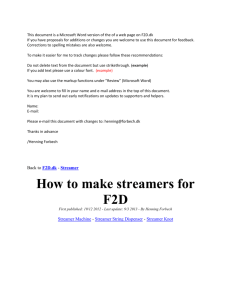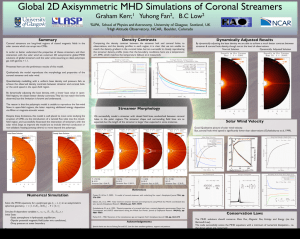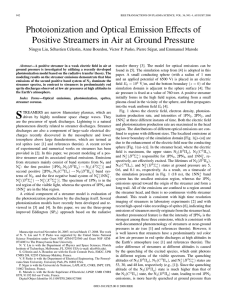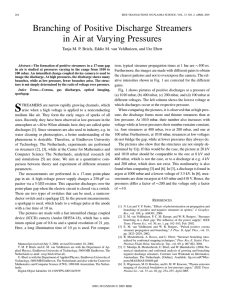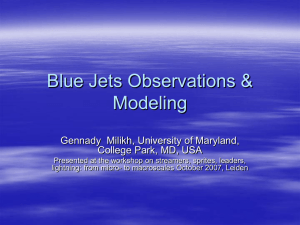formation of long streamers along the surface of a liquid
advertisement
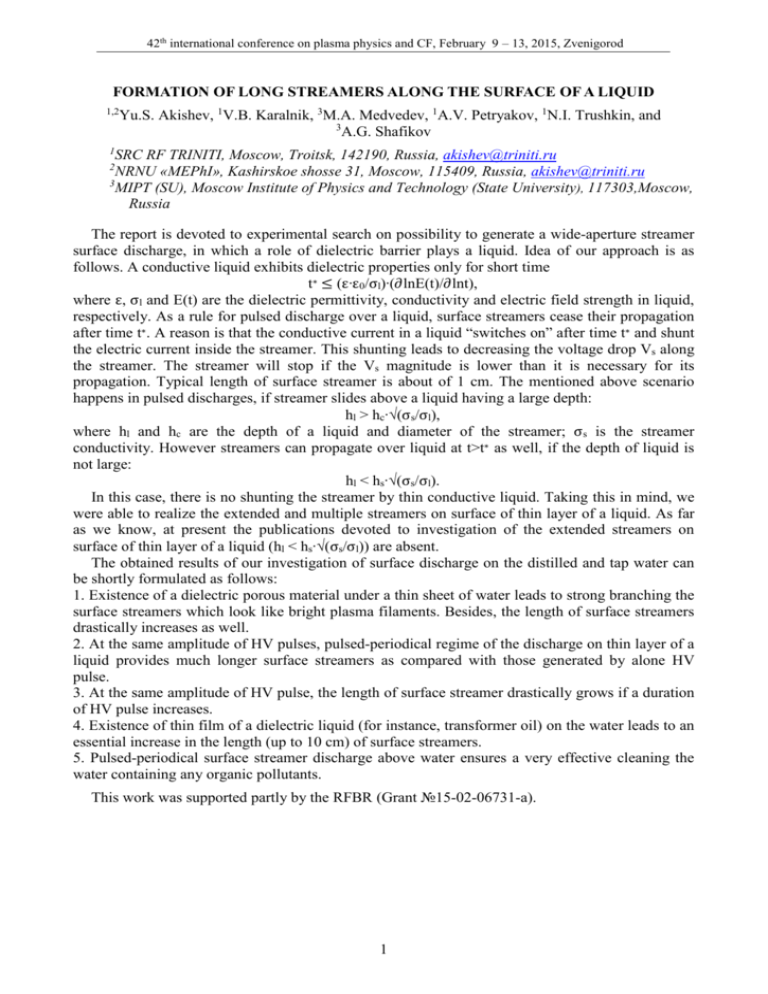
42th international conference on plasma physics and CF, February 9 – 13, 2015, Zvenigorod FORMATION OF LONG STREAMERS ALONG THE SURFACE OF A LIQUID 1,2 Yu.S. Akishev, 1V.B. Karalnik, 3M.A. Medvedev, 1A.V. Petryakov, 1N.I. Trushkin, and 3 A.G. Shafikov 1 SRC RF TRINITI, Moscow, Troitsk, 142190, Russia, akishev@triniti.ru NRNU «MEPhI», Kashirskoe shosse 31, Moscow, 115409, Russia, akishev@triniti.ru 3 MIPT (SU), Moscow Institute of Physics and Technology (State University), 117303,Moscow, Russia 2 The report is devoted to experimental search on possibility to generate a wide-aperture streamer surface discharge, in which a role of dielectric barrier plays a liquid. Idea of our approach is as follows. A conductive liquid exhibits dielectric properties only for short time t∗ ≤ (ε∙ε0/σl)∙(∂lnE(t)/∂lnt), where ε, σl and E(t) are the dielectric permittivity, conductivity and electric field strength in liquid, respectively. As a rule for pulsed discharge over a liquid, surface streamers cease their propagation after time t∗. A reason is that the conductive current in a liquid “switches on” after time t∗ and shunt the electric current inside the streamer. This shunting leads to decreasing the voltage drop Vs along the streamer. The streamer will stop if the Vs magnitude is lower than it is necessary for its propagation. Typical length of surface streamer is about of 1 cm. The mentioned above scenario happens in pulsed discharges, if streamer slides above a liquid having a large depth: hl > hc∙√(σs/σl), where hl and hc are the depth of a liquid and diameter of the streamer; σs is the streamer conductivity. However streamers can propagate over liquid at t>t∗ as well, if the depth of liquid is not large: hl < hs∙√(σs/σl). In this case, there is no shunting the streamer by thin conductive liquid. Taking this in mind, we were able to realize the extended and multiple streamers on surface of thin layer of a liquid. As far as we know, at present the publications devoted to investigation of the extended streamers on surface of thin layer of a liquid (hl < hs∙√(σs/σl)) are absent. The obtained results of our investigation of surface discharge on the distilled and tap water can be shortly formulated as follows: 1. Existence of a dielectric porous material under a thin sheet of water leads to strong branching the surface streamers which look like bright plasma filaments. Besides, the length of surface streamers drastically increases as well. 2. At the same amplitude of HV pulses, pulsed-periodical regime of the discharge on thin layer of a liquid provides much longer surface streamers as compared with those generated by alone HV pulse. 3. At the same amplitude of HV pulse, the length of surface streamer drastically grows if a duration of HV pulse increases. 4. Existence of thin film of a dielectric liquid (for instance, transformer oil) on the water leads to an essential increase in the length (up to 10 cm) of surface streamers. 5. Pulsed-periodical surface streamer discharge above water ensures a very effective cleaning the water containing any organic pollutants. This work was supported partly by the RFBR (Grant №15-02-06731-a). 1
